About Tibetan Dreams 地 Tibetan body history inquiry (1)
Author:Calamus Time:2022.06.26
Dreaming to ride a camel facing the south
Dreaming of riding a donkey facing the east
Dreaming to ride a monkey north
Dreaming of riding a dragon facing the West
This is a sign of death
Dorono
(ཏཱ་ ནཱ་ ཐ་ 7; 1575-1634)
Dreaming of wearing a uniform and screaming
Dreaming of holding a mirror or sitting on the mirror
Dreaming of running out and not wearing a hat
This is a sign of suffering
Master Rondo Awan Lausanne
(ཀློང་ བླ་ མ་ ངག་ རྡོལ་ དབང་ བློ་; 1719-1794)
Dreaming of nakedness and not knowing where you are
Dream wearing a red dress and picking red flowers
Dreaming of dancing with the deceased and being chased by the shadow
This is a sign of death
Naodo Karma is beautiful
(གནས་ ཀརྨ་ ཆགས་ མེད་ མདོ་; 1609-1678)
Note: In the traditional interpretation of the Tibetan land, there are three structures about dream analysis. The first is to associate the dream with the general common sense, such as the four signs of the four types of monks in the monk Dorona. Camel, donkeys, monkeys, and Tenglong are generally believed that these four creatures belong to the four sides of the north and southwest, respectively. If people find that the creatures they ride in their dreams are in a direction that is not in their direction, it means that the dreamer is outside the sacred daily law, that is, to die.
The second type of analysis of dreams is to fix the meaning of some behaviors, such as several signs of the troubles collected by Geori scholar Rondo Awan Lausanne. "Unarmed shirts" and "unadested hats" are symbolizing that a person has been separated from a fixed social image and social relationship (rudeness cannot be affected by no family), that is, transforming from humans to aliens or non -people; and " "Running and running out" deepen the non -human sense caused by the loss of characteristics.
Dreaming is associated with the "death scene" in the Buddhist world view. This is the third type of analysis method about dreams. In the pen of Naodo Karma, who was respected by the Karju faction and Ningma, "naked naked", red elements (generally referring to blood) and "dancing with the dead" are the South Asian corpse forests (or corpse) The inherent scene. Different from the previous signs of death (can be retained), these signs that conform to Buddhist landscapes and texts directly bring the dreamer into the inevitable death scene.
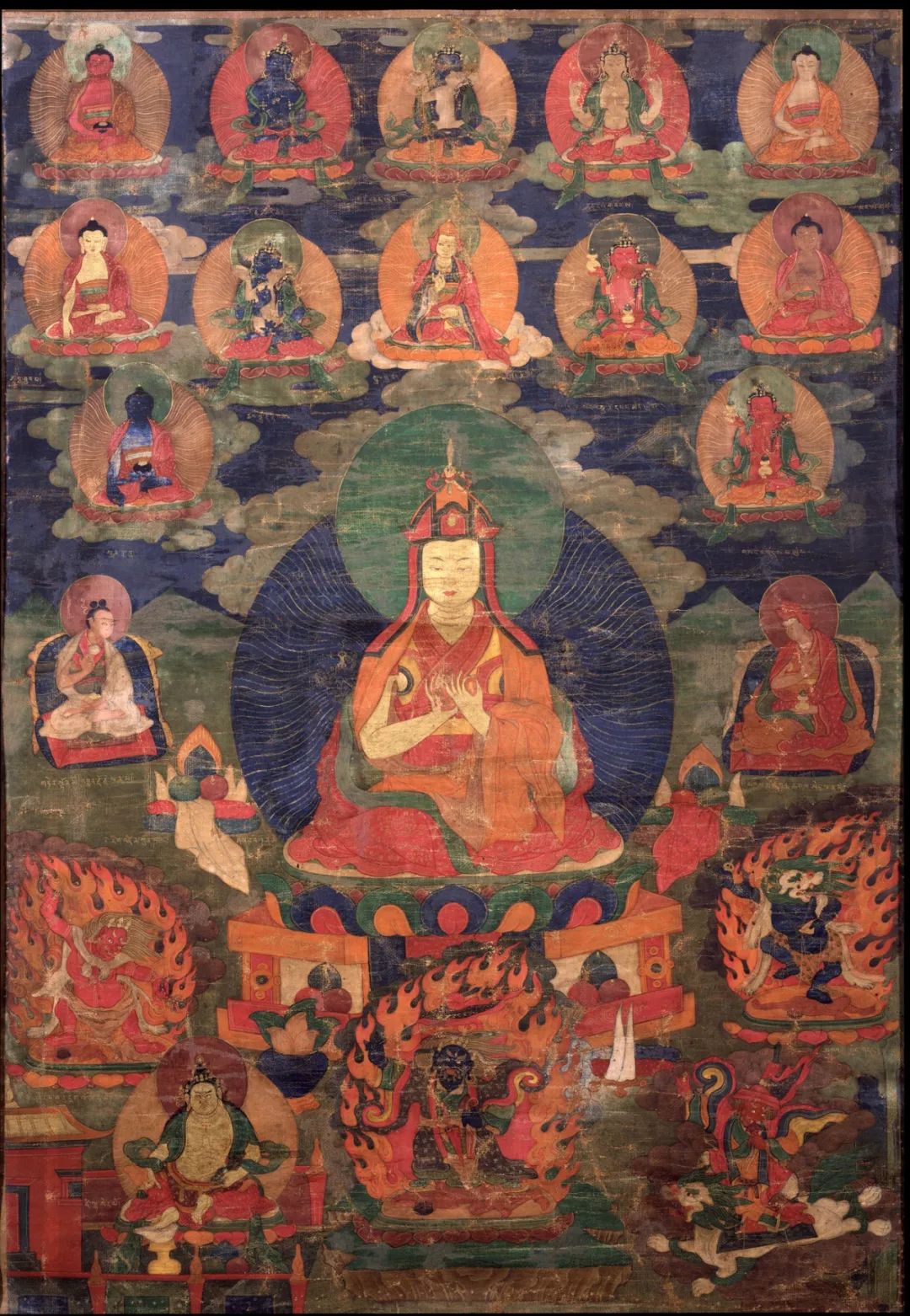
"Renzeng Gong Sangxi", 18th century, the Rubin Museum
The founder of Baiyu Temple in Kang District
Naodo Karma's beautiful student
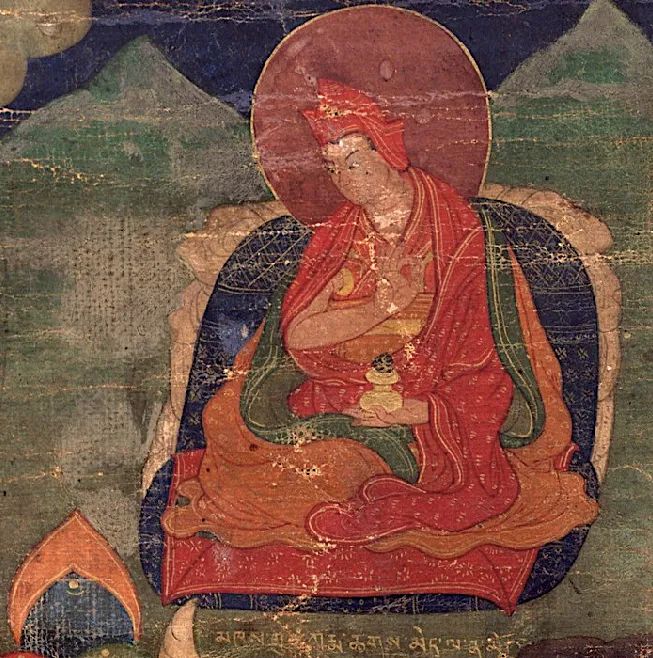
Local: Naodo Karma is beautiful
One of the most prestigious scholars and achievements in the Kagawa School
The builders of Tibetan "Pure Land Faith" and "Pure Literature Literature"
He is obsessed with teaching generalization and folk beliefs (Kangba area)
There are many contents of dream interpretation in their works

"Master Rondo Awan Lausanne", 19th century, New Delhi Tibet House Museum
Selected from "Master of the Lord of Rondo"
Gelu Pai Encyclopedia Scholar
Its works include everything
Roger Bacon, known as Tibetan
(Roger Bacon; Catholic philosopher)
Master Rondo will make the past dreams and dreams of dreams
Integrated and further expanded content
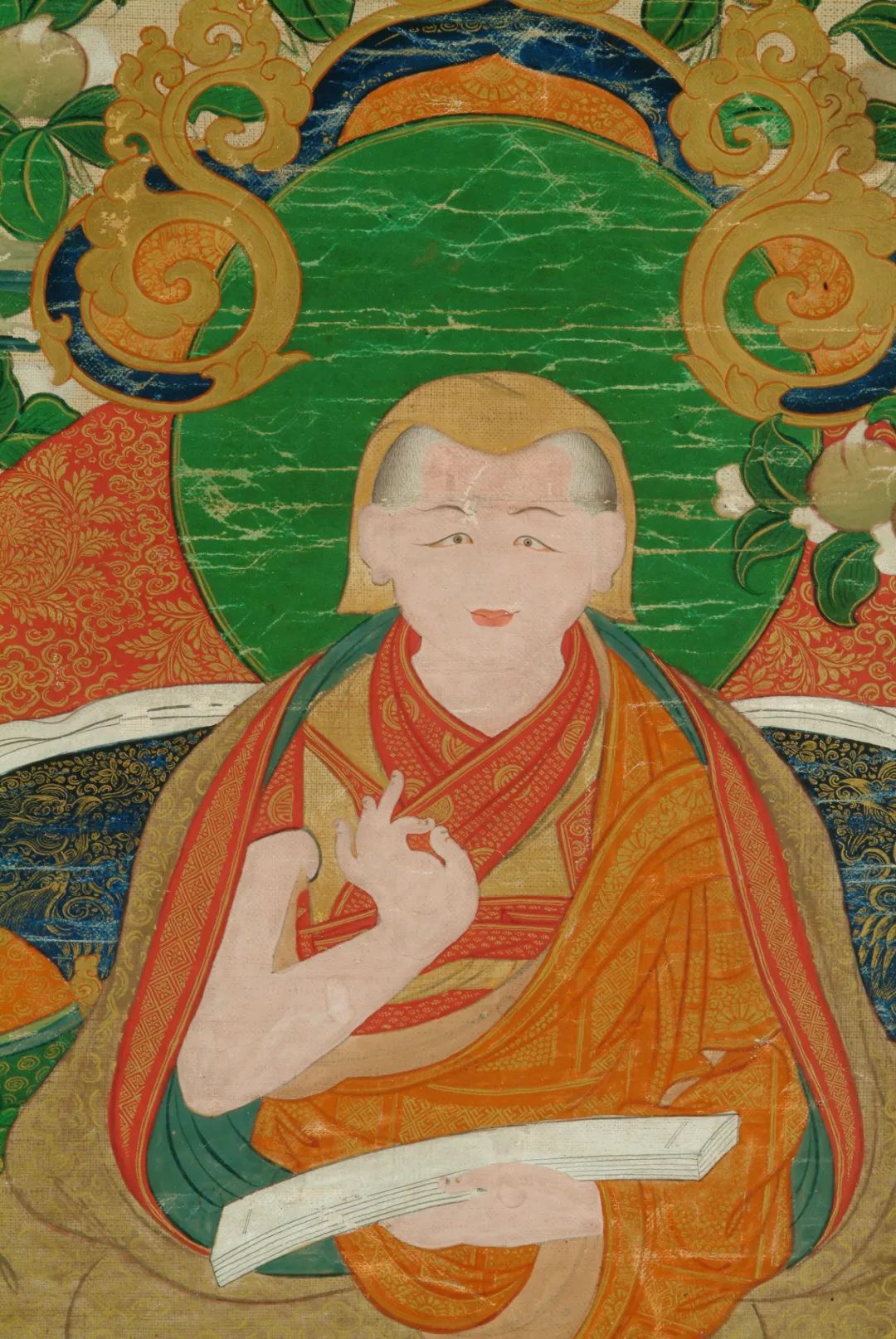
Local: Master Noodles
"The Beard in Portrait of Himalayan" and "Fatter in the Himalayan Art" is an article about the "physical history" I published before; the former pays attention to biological characteristics, while the latter pays attention to artificial body. From the dream, I will start a new series, that is, the inquiry of the body history of Tibetan. The reason I chose to make dreams as the beginning of the series is clear: in the framework of the dual theory of "body -consciousness" in the classical period, dreams have a pure neutral description (the body's neutral field).
Whether it is interpretation (ལྟས་ 释 གླིང་ བ་ བ་ བ་ བ་ བ་) or the dream (རྨི་ལམ་ བརྟག་ པ་), the logic behind it is to use "dreams" as a complete narrative and law, and this Narrative and laws are often presented to the world in a seemingly chaotic or hidden way. When people wake up from their sleep, any words organized by consciousness cannot be explained (or correctly). The sense of fragmentation (revised narrative) and the continuous orgasm (high symbolization) have always been an important reason why dreams have deeply attracted us.
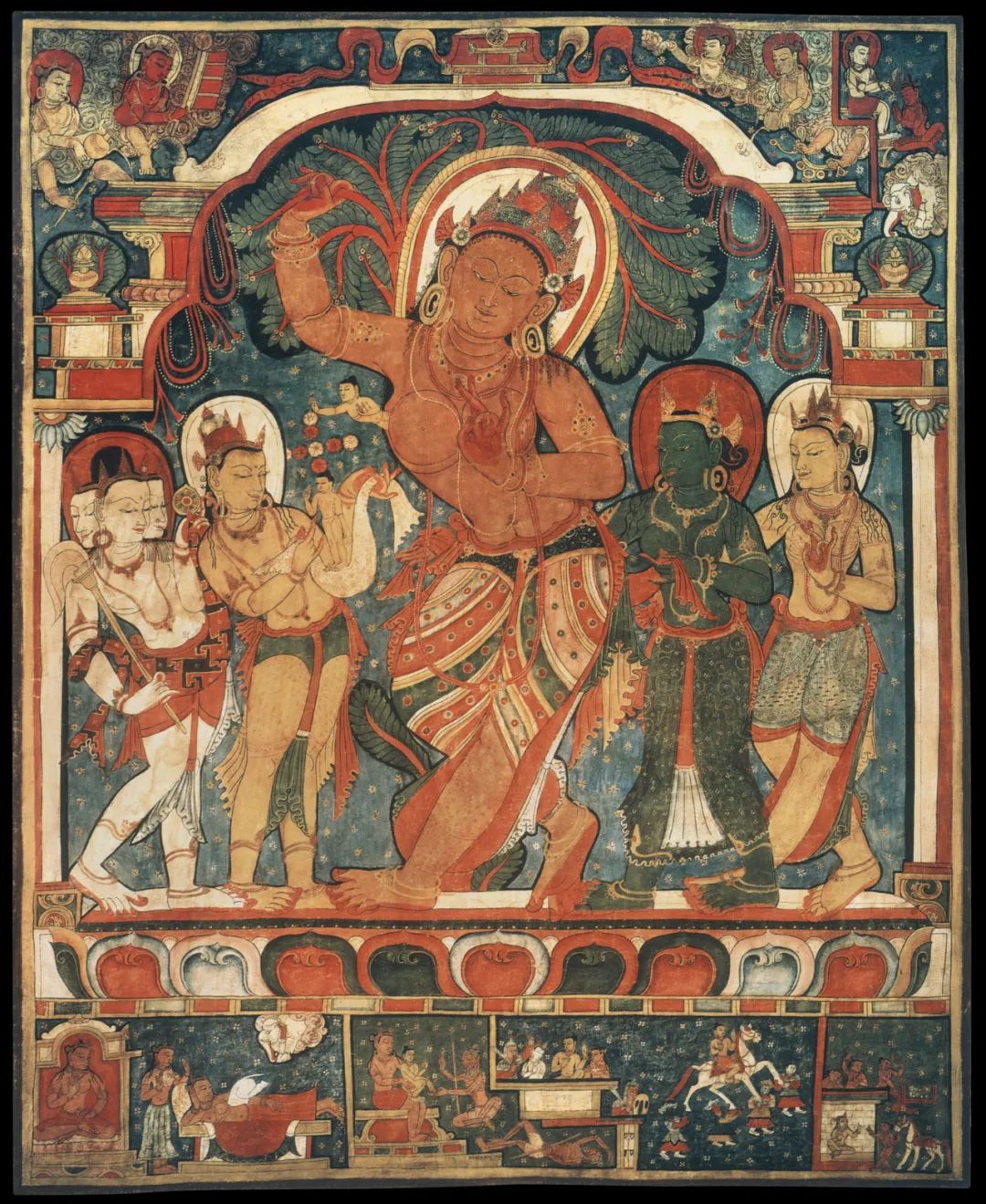
"Buddha's Map: Birth of the Buddha", 13th century, private collections

Local: Mrs. Moye Dream Baixiang entered the abdomen and became pregnant

"Biography of Mirari", 19th century, Stockholm's private collections
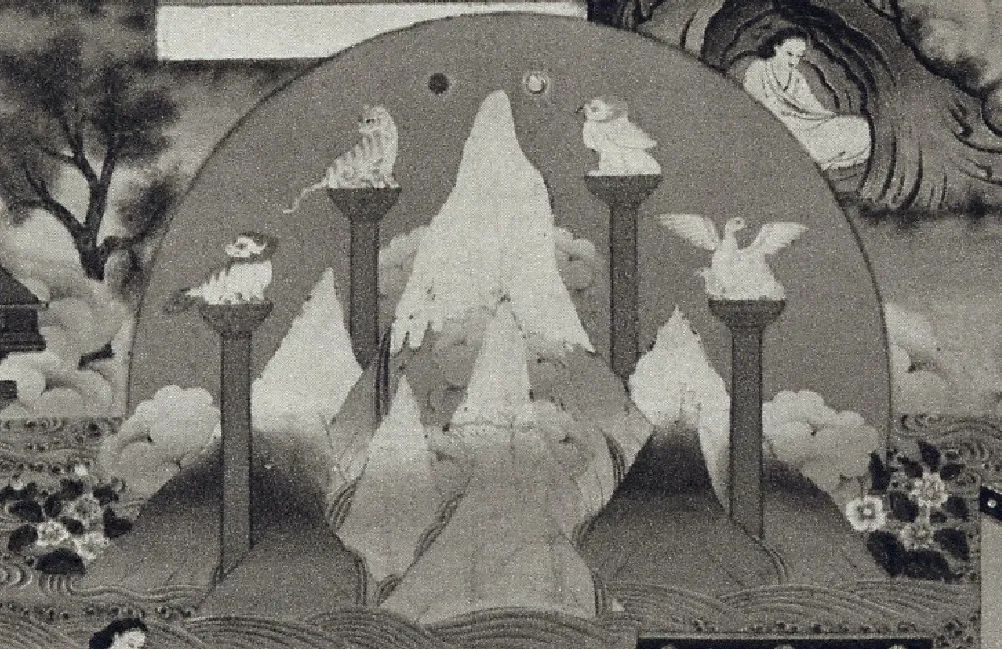
Local: Mirari's "Four Pillar Dreams"
Four pillars and four beasts symbolize the four disciples of Marba translator
The dream indicates that the Kagawa faction will be prosperous
In the traditional description of Tibetan land, dreams are a characteristic and omen. Why is it a sign? Because dreams are usually related to the signs of life (such as one of the three characteristics of perception of death) and the signs of the disease. Master Rondo divided the dream period into dusk (dream refreshing the facts), in the middle of the night (dream affected by ghosts) and dawn (dream foreshadowing the future), and the oral tradition was divided into the middle of the night (physical change), the second night in the middle of the night (Future occurred) and before waking up (recently occurred). In the concept of traditional medicine, the dream from the middle of the night to the middle of the night is generally caused by some changes in the human digestive tract and respiratory tract (such as phlegm obstruction or bile blocking).
So why is it a sign? Because of dreams as an uncontrollable "strange thing", the process of interpreting its interpretation seems to have become a mysterious journey. In Tibetan, the gods are generally called "no dream" (རྨི་ལམ་ མེད་ མེད་). If a person's dream is dangerous for a long time, the soul is dangerous; otherwise, if a person's dream is too messy, it shows that the person's body is occupied by non -human ghosts. In addition to distinguishing representation and signs with dream time, the dreams are generally divided into six categories in Tibetan literature: 1. Popular dreams — 2. The dream that can be listened — the dream of the incident — 4. Dream -5. The dream of the expected event -6. The dream of external force interference. In these six categories of dreams, the dreams need to show dreams, and the dreams that do not experience the incident need to further occupy the dream. After the last two types of dreams, the dreamers must follow the corresponding prayer ritual and disaster removal ritual.
"Sakya Master Gongga Ningbo", 19th century, private collections
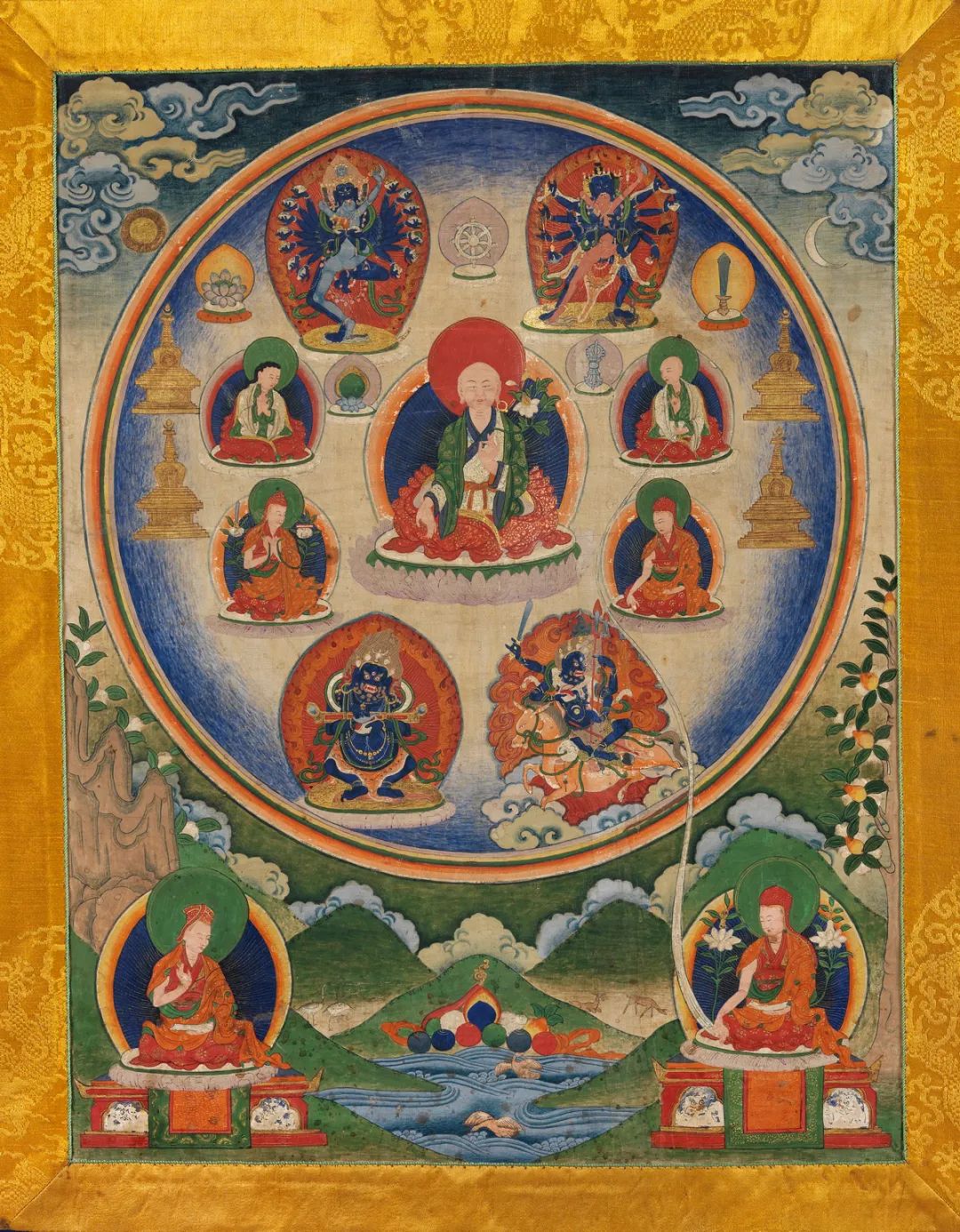
The founder of Sakya Ore inheritance Gongga Sangbo
(ངོར་ ཀུན་ དགའ་ བཟང་པོ་ ཆེན་; 1382-1456)
In the dream, you can see the Sakya Pie's ancestor Gongga Ningbo
(ས་ ཀུན་ དགའ་ སྙིང་ ཆེན་ ཆེན་; 1092-1158)
And get many teachings and teaching methods
It is worth mentioning that
Gongga Ningbo in his later years is also in a dream
The memory lost due to poisoning
Local: Gongga Sangbo

In the Buddhist context of Tibet, dreams allow people to surpass the rules of physical body and provide a stable and original space. In the shade of sleep, all experiences have begun to become pure, and the boundaries between dreams and reality become extremely vague (the process of overcoming fear and illusions).
The practitioners who have obtained "dream skills and teachings" (that is, sleeping yoga; རྨི་ལམ་ རྣལ་ འབྱོར་ འབྱོར་ दर्शन) can easily gain a complete situation and profound wisdom. It should be noted that sleeping yoga generally requires practitioners to advance in a fixed period of time, and obtain the oral and inspiration of the guru.
"Copper Mountain Pure Land", 19th century, the Rubin Museum
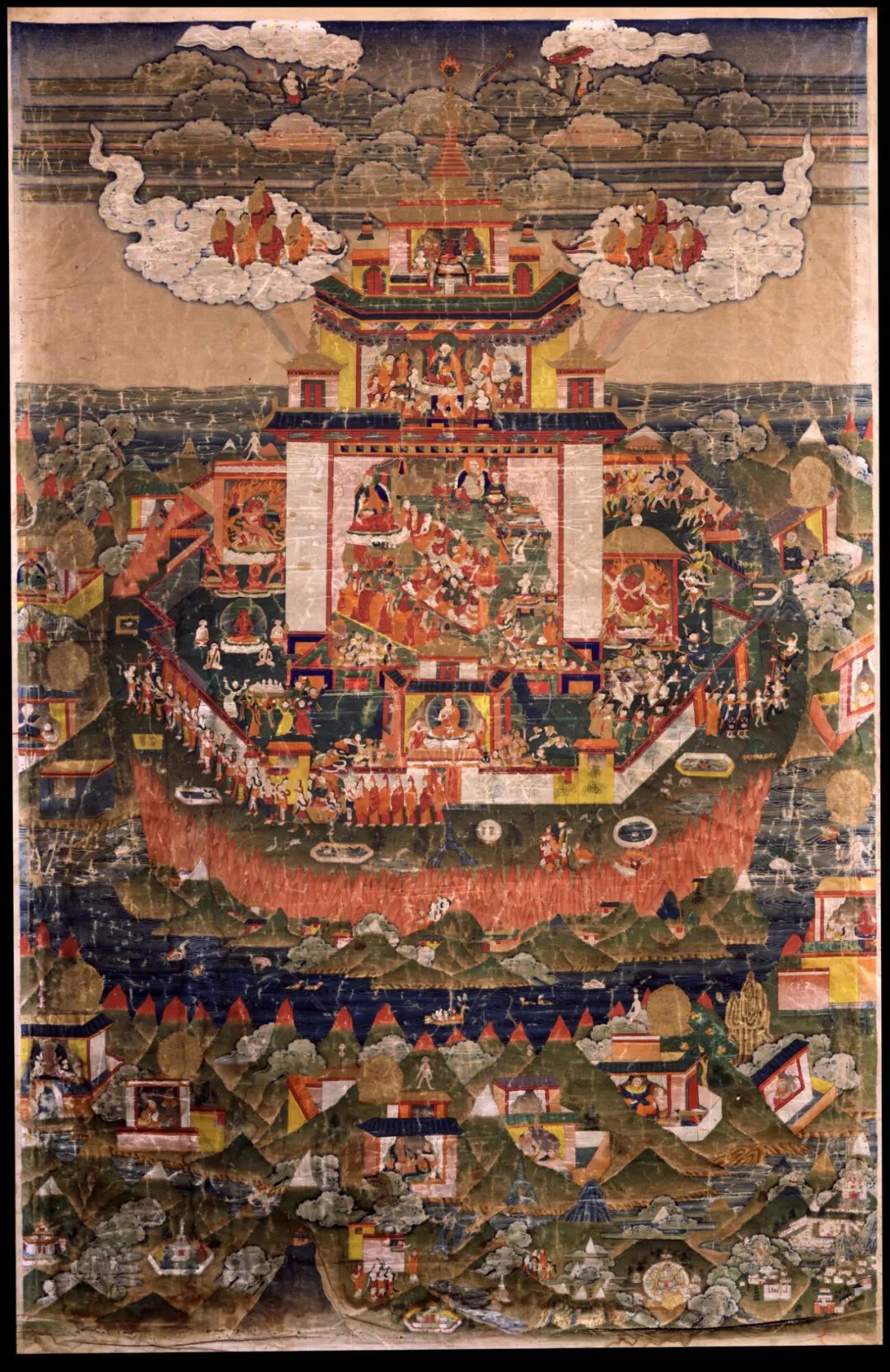
Lotus Salva lives in Copper Mountain Pure Land
Master Fu Zangba
(མཆོག་ གླིང་ པ་ 8; 1829-1870)
I have to see the whole picture of the Pure Land of Tongshan Mountain in a dream
And write "Pray for the Bringing Copper Jixiang Mountain"
Local: Lotus Master

ལྷོ་ ལྷོ་ ཉི་མ་ ནུབ་ཕྱོགས་ དག་ དག་ ན ན
པ་ པ་ དག་ དཔལ་ རིའ རིའ ཞིང་ ཁམས་ བཞུགས བཞུགས བཞུགས
Sunset southwest
Tengkong Shengshan Realm
Local: Twenty -five people in Wang Chen
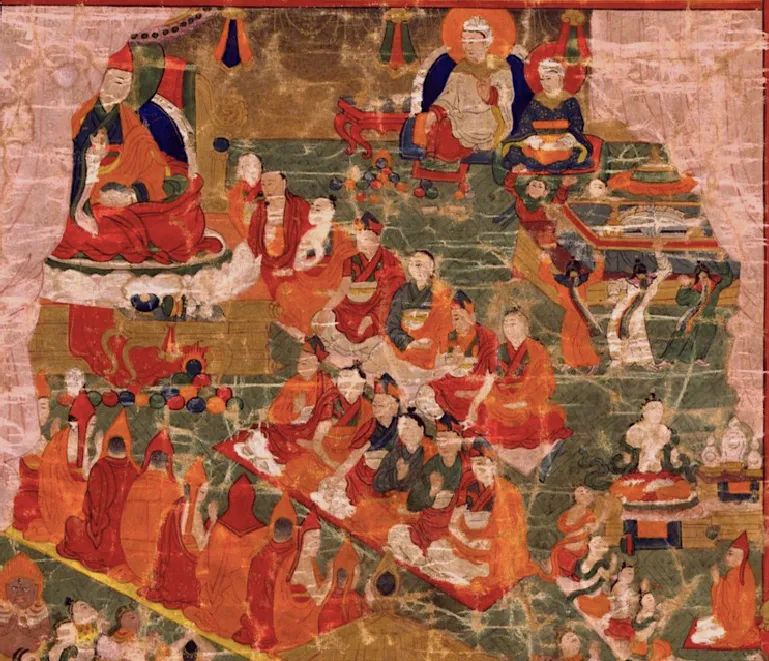
ལྡན་ ལྡན་ ལྔ་ སྤང་ ལྗོངས་ ལྗོངས་ རྩིའ ི་ རྫིང རྫིང རྫིང
དང་ དང་ བྱ་ རི་ དྭགས་ དྭགས་ འགྲོའ ི་ གནས གནས གནས
Wushan Green Delica Pond
Birds and Beasts live in forests
"Yangba Ba Jianzanbei", 15th century, private collections
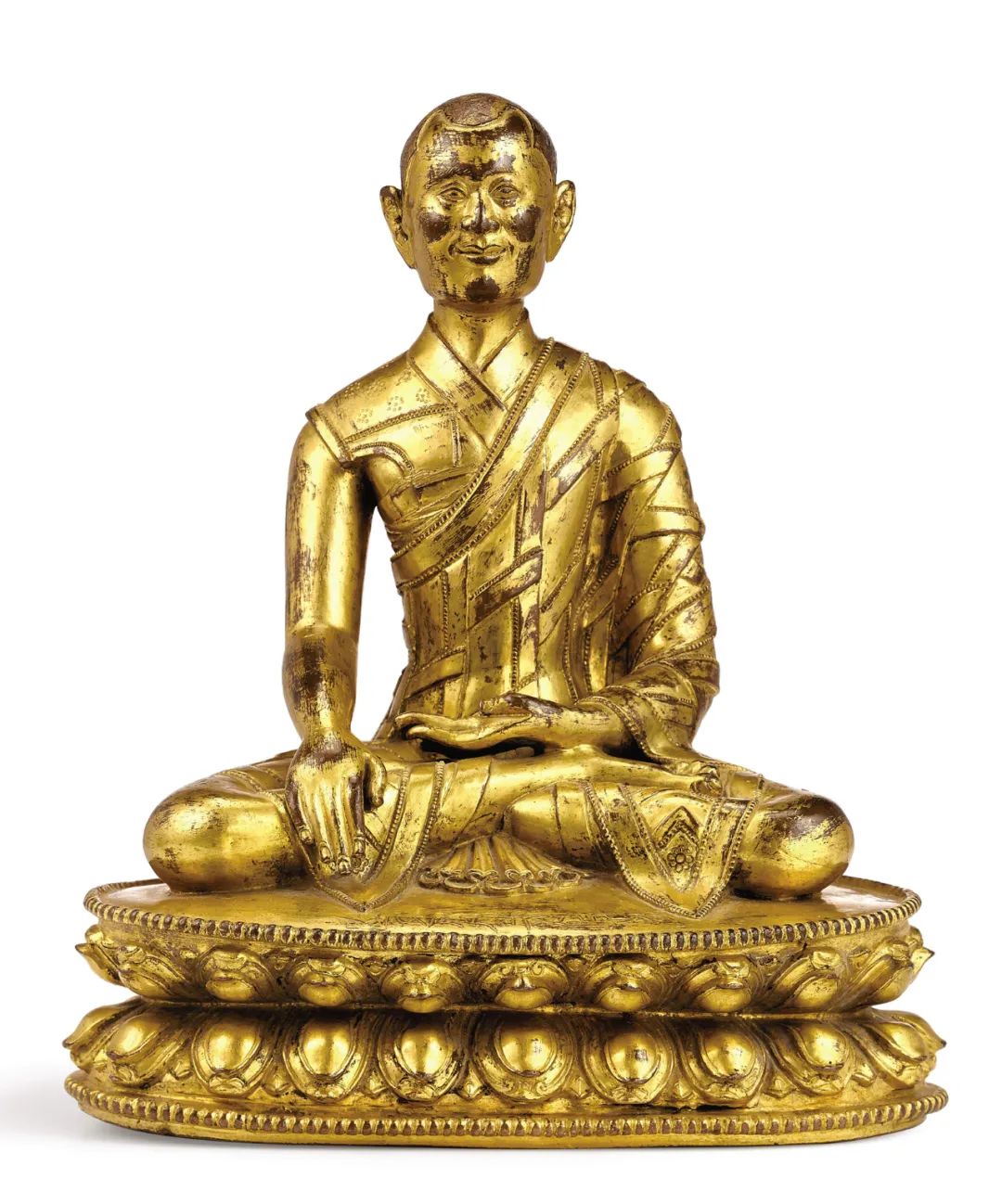
Yangba Ba Jianzanbei
(ཡང་ རྒྱལ་ མཚན་ དཔལ་ དགོན་པ་; 1213-1258)
I have dreamed many times that Caiba Karka founders are chasing Paya
(ཞང་ བྲག་ པ་ བརྩོན་འགྲུས་ གཡུ་ གྲགས་ གྲགས་; 1123-1193)
It will never see the guru
As a guidance teacher of his own dream yoga
Local: Tibetan inscription

ན་ ན་ ལ་ མོ ། ། །
(Dingliyang Maca)
about the author
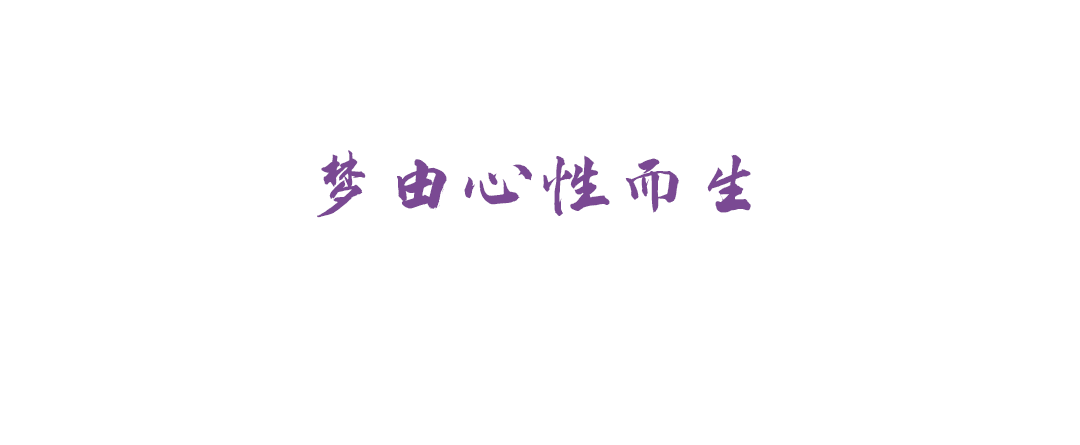
Sorawangqing
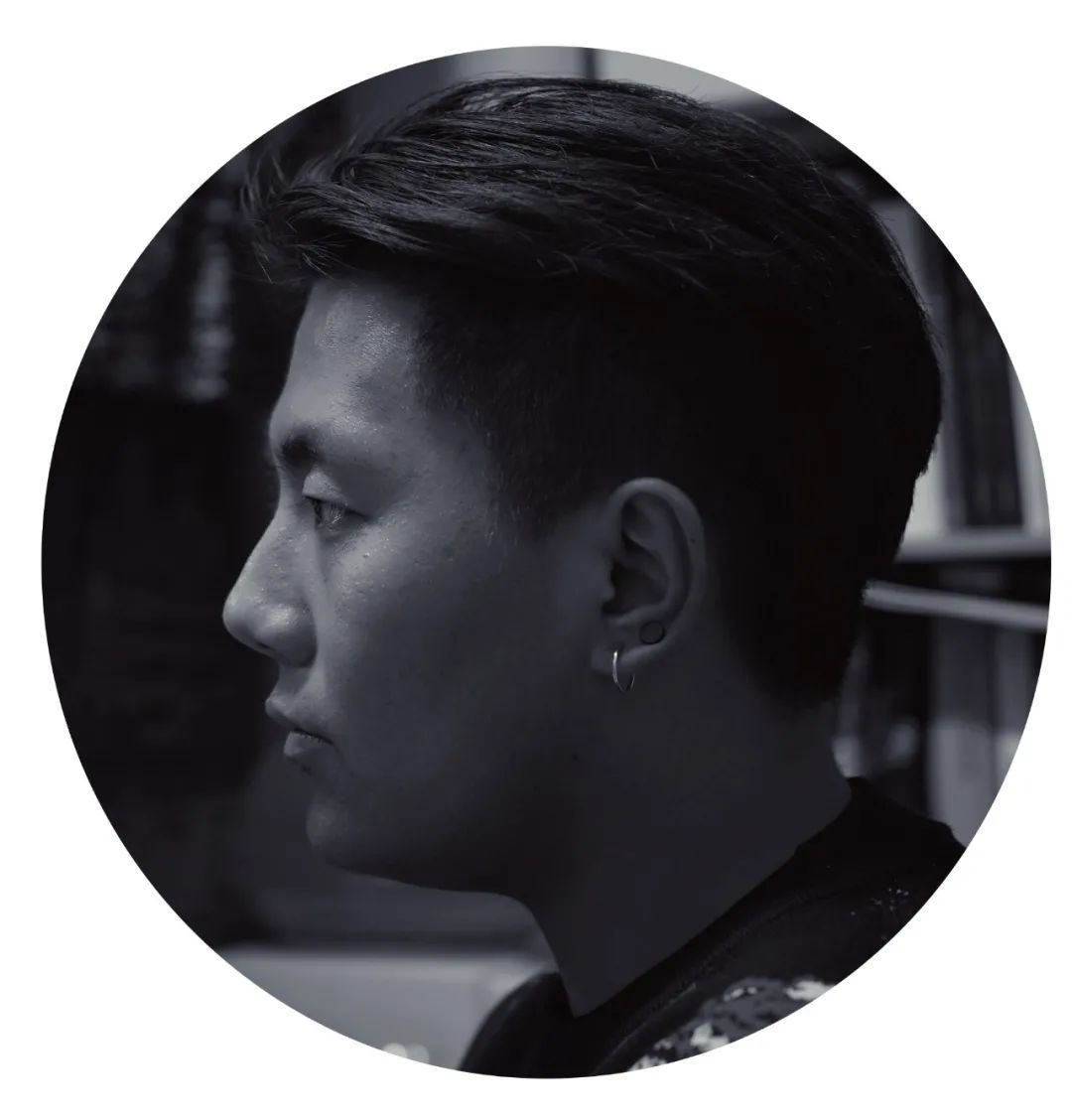
Independent writer, research assistant, youth art critic
Graduated from the University of Asia -Africa College of London (cooperation in the project of the University of Oxford University), studied under the University of History of Renmin University of China, and Shi Zhe Shuangxiu. He has long presided over the Tibetan History Research Class of Renmin University and published an article on Weibo and the public account. Since childhood, he has loved literature and history. He has been studying original materials for a long time, and has learned ancient Greek, Latin, Guxibella, Xixia, Sanskrit, Manchu, Mongolian, and ancient Tibetan (as an academic research language). In 2017, he participated in the "Epic and Ethnic-Yakut" special conference organized by the United Nations in Russia. In 2018, the title of "Youth Art Critics" was obtained. Representative works include "Images, A Survival Rhetoric -Classical Image and Urban Image Analysis". In 2019, the full four volumes of the "Tibetan History Outline" in the "Tibetan History Atlas" of the national project, the "Tibetan History Atlas", have been finalized; they have participated in the writing of "Tibetan Cihai" and served as the executive editor.
Body history
- END -
The archeological excavation of the Sanxingdui site has achieved remarkable results in the near future: No. 7 pit excavations are excavated near the end, and the unearthed cultural relics are surprised.
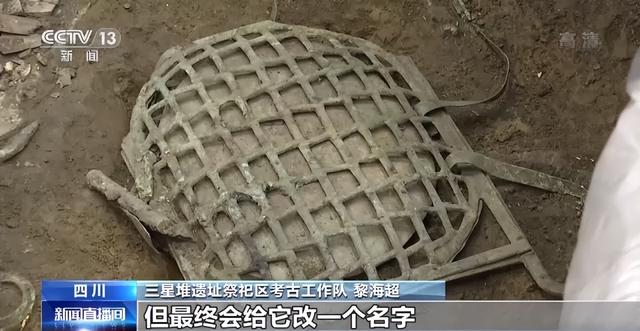
The archeological excavation of Sanxingdui sites in this round has achieved remark...
Youth can snore, never stop in the footsteps
Roman Roland once said: A person's strength is not reasonable, but on enthusiasm. And life cannot be smooth to the end, and there must be a few back and forth to get good results. As long as the men...